
Anna Fleming shares the story of ten-time Everest summiter Lhakpa Sherpa of Nepal.
"Climbing is my way out of washing dishes. It is the way to make a better life for the girls." - Lhakpa Sherpa
Born in a cave sometime in 1973, Lhakpa Sherpa's exact date of birth is unknown. Other dates are clearer. On 18 May 2000 she became the first Nepali woman to successfully climb and survive Everest. Twelve years later, on 12 May 2022, she stood on the highest mountain in the world for a record-breaking tenth time: more than any other woman. Lhakpa's journeys to the top of the world are a remarkable story of resilience and dogged perseverance.
As a girl, Lhakpa grew up within sight of Everest or Chomolungma, the Goddess Mother of the World, as the mountain is known to Tibetans and indigenous peoples of Nepal. She comes from the village of Balakharka in the Makalu region in north-eastern Nepal. This poor agricultural area lies within the vicinity of Makalu, the fifth-highest mountain in the world.
Lhakpa had no education and didn't learn to read or write as a child. Girls were not allowed to go to school. She was one of eleven with three brothers and seven sisters and was expected to marry young. But Lhakpa was a tomboy with a height advantage on her sisters.
Like Alison Hargreaves, Lhakpa's father introduced her to the mountains when he took her over the 'big hills' into Tibet to sell salt. Along their journey, Lhakpa and her father passed through a range of habitats, from river valleys and terraced fields to rhododendron forests and high alpine pasture, before ascending the high-mountain cols, surrounded by the tallest peaks in the world.
Born and raised at over 3,000m, Lhakpa's Sherpa physiology is well-adapted to the heights. Mountaineering is in the family blood and business. Her brothers are mountaineers and guides who have climbed Everest multiple times. By 2019, her eldest brother had summited Everest 10 or 11 times, another brother had been up eight times and her youngest brother had climbed the world's tallest peak five times.
At 15, Lhakpa began working for her uncle as a kitchen boy on Makalu, helping by peeling potatoes and washing dishes. She soon changed jobs, leaving the kitchen to carry loads of equipment up the mountain as a porter – another traditionally masculine role. At 16, she worked as a porter again and climbed Mera and Yala – 6,000m mountains known as 'trekking' peaks – which are good practice for climbing the higher 8,000m peaks in the area.
Lhakpa was set to follow in the footsteps of the family business, but Nepali women were not expected to climb or work in the mountains. Her mother disapproved of her mountaineering:
'My mum said I would never get married,' she told the BBC. 'She warned me that I would become too masculine and undesirable. The villagers told me that it's a man's job and I would die if I tried it.'
Ignoring her mother, Lhakpa began climbing in earnest and in 2000, aged 27, she made history by summiting Everest. Tenzing Norgay was the first Sherpa man to reach the top on the historic 1953 ascent with Edmund Hillary. 47 years later, Lhakpa summited as part of the Nepali Women Millennium Everest Expedition. After years of Sherpa men guiding people up the mountain, this was the first attempt to get Sherpa women up and down the mountain. It was momentous.
One other Nepali woman had made it to the summit before Lhakpa. Pasang Lhamu Sherpa had attempted to climb Everest three times before she was finally successful on 22 April 1993. However, a violent storm came in and she died on the descent.
After her death, Pasang Lhamu Sherpa became a national hero. The 32-year old mother of three was the first woman to be decorated with the Order of the Star by the King of Nepal. She appeared on postage stamps, a life-size statue was put up in Kathmandu and in her honour, the mountain Jasamba Himal (7,315 m) was renamed Pasang Lhamu Peak. The film Pasang: In the Shadow of Everest (2022) illustrates her trailblazing life, for no Nepali woman had ever attempted anything like what she had done.
***
Lhakpa took the baton from Pasang Lhamu and followed her dream of climbing mountains and reinventing the identity of Nepali women. In 2003, Lhakpa made the Guinness Book of Records when she stood on Everest as part of the largest sibling group to stand on the summit at the same time. Lhakpa was with her brother Mingma Myalu (24) and sister Ming Kipa, who was just 15 years old. Since Nepal would not allow under-16s to climb the mountain, Ming Kipa and Lhakpa had to ascend from the more challenging Tibetan side. On this historic ascent, Ming Kipa Sherpa became the youngest woman to climb Everest.
Lhakpa made another bold move in 2002 when she left Nepal and moved to Connecticut to live with her husband, Gheorghe Dijmărescu. They had met at a party in 2000 in the famed Rum Doodle bar, the Pete's Eats of Kathmandu, where every successful Everest summiteer is awarded free dinners for life.
Lhakpa's husband Dijmărescu was also a mountaineer. When they met, he was celebrating his second Everest ascent, having just climbed the peak with no supplementary oxygen. Like Lhakpa, his own life story was also one of adversity and migration. Growing up in Romania, Dijmărescu was a soldier who defected and escaped Ceauşescu's regime by swimming across the Danube. Dijmărescu spent time in an Italian refugee camp before he made it to America and built a new life.
The high-altitude couple climbed Everest together five times. They also had two children: Lhakpa climbed Everest eight months after giving birth to their first daughter, Sunny, and later she climbed the mountain while two months pregnant with Shiny. Shiny is happy about this, Lhakpa told Outside magazine, as it means she has also been to the summit of Everest.
However, Lhakpa's marriage was less than idyllic. While the marriage helped her to leave Nepal and embrace the freedoms that western women enjoy, Dijmărescu was extremely violent. In 2004 he assaulted Lhakpa on Everest, knocking her unconscious in an incident that shocked the climbing community and made international media. The ensuing outcry did little to change his behaviour. The attacks and hospitalisations continued until Lhakpa and the two girls were placed in a women's shelter in 2012. The couple subsequently divorced.
***
Lhakpa, the ten-time queen of Everest, does not have it easy. While she is gifted with talent, strength and determination, as well as a natural affinity for the Himalayan mountains, she persistently navigates a number of challenges.
Sherpas have long struggled for recognition on the international mountaineering stage. Nepali climbers often ascend the Himalayan peaks as part of their livelihood and are cast into a supporting role that fails to recognise their phenomenal abilities. The name 'Sherpa' is often confused with a job description. However, things are changing. Sherpa climbers are making groundbreaking ascents of their own, founding their own expedition companies and some have become IFMGA mountain guides — including Dawa Yangzum Sherpa, the first female IFMGA mountain guide from Nepal.
Meanwhile, the documentary Sherpa (2015) highlighted the dangerous working conditions, low pay, pressures and cultural tensions that define the Sherpas' specialist labour on Everest. Increasingly, Sherpas are finding employment elsewhere in Nepal's tourism industry.
Being a woman adds to the difficulties. In her traditionally masculine culture, Lhakpa was not expected to climb. She is proud to have challenged expectations and shown what women can do, which she believes is contributing to a broader social change for her country. She explained the local perspective:
'They thought a woman could not do it and did not understand it. They did not understand why I wanted to do it because girls are weak, according to them. My country has this mindset. They only respect men while in America they respect the men and women. I said no, that I want to change this idea, that women could do it, too. I really wanted to do it. Some people say climbing is for men and women thought I looked like a man, but I knew I had to do it. I never gave up. Nobody helped me. Now, they're recognizing what I'm doing, but not at first. Women can do this sport as well as men can.'
Lhakpa is an ultra-athlete who has climbed Everest more than any other woman in the world, but she has struggled to attract sponsorship. Her kit is reused across multiple Everest expeditions and she often uses crowdsourcing to fund her trips.
As an immigrant single-mother in the US, Lhakpa must work hard to pay the rent. She has lived on food stamps and often juggles two minimum-wage jobs at a time to earn around 400 dollars per week. Housekeeping, cleaning, caring for the elderly, work as a janitor or a cashier at 7-Eleven and dishwasher at Whole Foods shops are among the jobs she does, leaving little time for training.
***
Despite the challenges, Lhakpa's ambitions continue. In 2019, she outlined her dreams for The Guardian. On the list were things like sponsorship, time to build her guiding business and money to send her daughters to college. "These are not quick dreams," she explained. "They are long dreams." She also wants to climb K2. In 2010, she made it to Camp 3 but they had to descend due to bad weather.
Now in what may be her fiftieth year on this planet, Lhakpa is still slogging at her dreams. Recognition for all that she has accomplished is slowly creeping in. In 2016, she was listed among the BBC's 100 most inspirational and influential women. On 24 April 2023 Lhakpa won India's prestigious Tenzing Norgay National Adventure award. She has also received sponsorship to climb K2.
Reflecting on when she first climbed Everest, she told the BBC:
'I felt like I'd changed Sherpa culture, the status of Sherpa women and Nepali women. I enjoyed being outside of my home and I wanted to share that feeling with all women.'
Summing up her motivation for mountaineering and her purpose, she added:
'I've had a challenging life. Mountains made me happy and relaxed. I will never give up. I want young women not to give up.'
Having struggled for years to gain support for her endeavours, Lhakpa has a new team by her side. Her daughters have come of age and are now her managers. Lhakpa's guiding business Cloudscape Climbing is active. She is currently preparing to climb K2.
Long may Lhakpa— the queen of Everest—follow her mountain dreams.
- INTERVIEW: Catherine Destivelle - Rock Queen 8 Mar
- ARTICLE: Top 10 Borrowdale Routes at VS and Under 22 Jan
- ARTICLE: Herstory 7: The Rise of Women Mountain Professionals 27 Dec, 2023
- HERSTORY: The Climbing Cholitas: Skirts to the Top for Women's Empowerment 2 May, 2023
- HERSTORY: Alison Hargreaves: Climbing Her Mountain 7 Mar, 2023
- HERSTORY: Wanda Rutkiewicz and the battle for women's climbing 13 Feb, 2023
- HERSTORY: Lady Climbers of the Long Nineteenth Century (1850-1914) 20 Dec, 2022
- HERSTORY: ORIGINS: The surprising origins of women's mountaineering - 1770-1830 9 Nov, 2022
- ARTICLE: The Cobbler: A Return to Mountain Cragging 7 Sep, 2021
- ARTICLE: A Climber in Lockdown 14 May, 2020










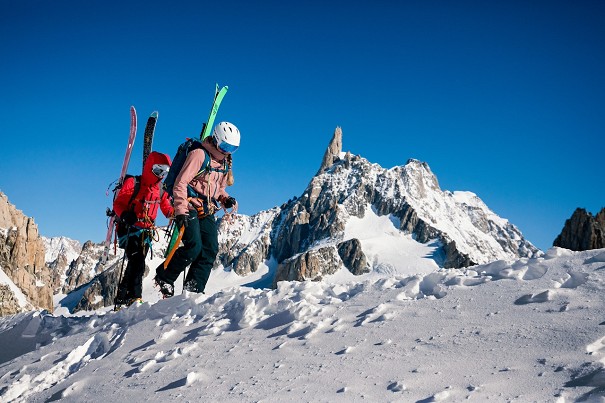

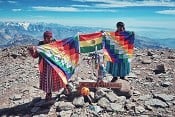
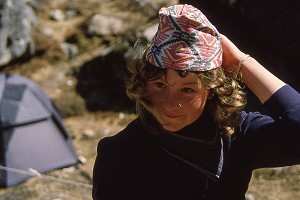
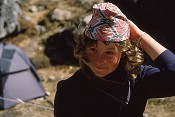
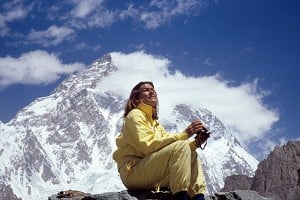
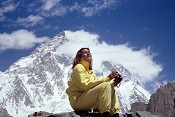

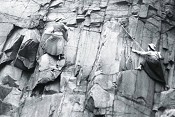


Comments